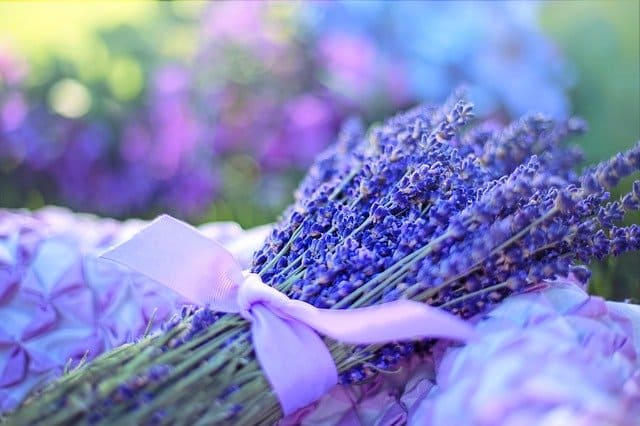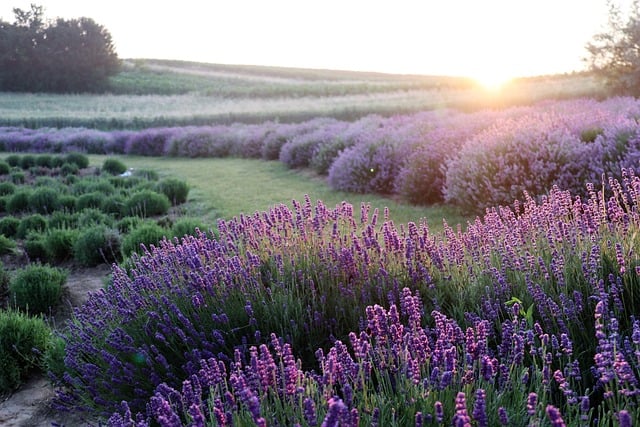In this blog post, we’ll explore the best practices for harvesting lavender, the various uses for this delightful herb, and tips on how to maintain your lavender plants. So grab your gardening gloves, and let’s dive into the world of lavender!
Why Lavender?

Before we get into the harvesting process, let’s take a moment to appreciate why lavender is such a beloved herb. Not only is it visually stunning, but it also offers a plethora of benefits, including:
Aromatherapy: Lavender is renowned for its calming properties, often used in aromatherapy for stress relief and relaxation.
Culinary Uses: While lavender is commonly associated with fragrance, its culinary applications are equally delightful; it’s used to enhance desserts, teas, and even savory dishes.
Crafting: Dried lavender makes for beautiful sachets, potpourri, and can even be infused into oils for homemade beauty products.
Best Time to Harvest Lavender
Timing is everything when it comes to harvesting lavender. The ideal time is during the peak bloom, which varies depending on the lavender variety and your geographic location. Generally, for most types, late spring to early summer (around mid-June to early July) is perfect.
Signs It’s Time to Harvest:
Color: Look for vibrant purple blooms. The flowers should be fully formed but not yet fully open. This is when the essential oils in the flowers are most concentrated.
Fragrance: As the flowers begin to bloom, their scent becomes more pronounced. A strong fragrance is an indication that your lavender is ready for harvest.
Weather: Choose a dry day to harvest, ideally after the morning dew has evaporated. This helps preserve the quality of your lavender.
How to Harvest Lavender
Gathering your lavender can be a satisfying experience, but it does require a bit of technique. Here’s how to do it right:
Tools You’ll Need:
Sharp Shears or Pruners: Invest in a good pair of gardening shears to make clean cuts.
Basket or Bundle: Have a basket handy for collecting cut stems.
The Harvesting Process:
Select the Stems: Choose healthy, straight stems from the plant. Aim to harvest about 1/3 of the plant to ensure it continues to thrive.
Cutting: Using your shears, cut the stems just above the leaves. This encourages new growth and ensures better health for the plant. Aim for a length of about 10-12 inches, as this allows for easy bundling later on.
Bunching: Gather around 5 to 10 stems to form a small bouquet. Tie them together with twine or string.
Drying: Hang your bundles upside down in a cool, dry, and dark place to preserve their color and scent. Make sure there’s enough space for air to circulate around the stems.
Using Harvested Lavender
Once your lavender is fully dried, the possibilities are endless! Here are just a few creative ways to utilize your harvest:
1. Crafts and DIY Projects:
Lavender Sachets: Sew small fabric pouches and fill them with dried lavender to place in your drawers or closets.
Potpourri: Combine dried lavender with other dried flowers, spices, and essential oils for a sweet-smelling blend.
2. Culinary Uses:
Lavender Tea: Steep dried lavender buds in hot water for a calming herbal tea.
Lavender Infused Sugar: Mix dried lavender with sugar to create a fragrant sweetener for baked goods.
3. Aromatic Products:
Essential Oils: While more complex, you can create your own lavender-infused oils for use in massage, skincare, or as a natural perfume.
Caring for Your Lavender Plants
To ensure your lavender continues to thrive for years to come, maintaining the plants is crucial. Here are some care tips:
Watering: Lavender is drought-tolerant once established. Water the plants deeply but infrequently. Overwatering can lead to root rot.
Pruning: After your first bloom, prune back the spent flowers to encourage a second flowering. In the fall, cut back about one-third of the plant to promote health.
Soil: Ensure good drainage. Lavender prefers sandy, well-drained soil, so consider mixing sand or gravel into the garden bed.





